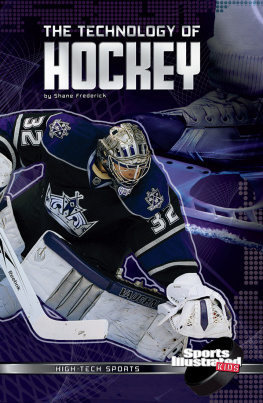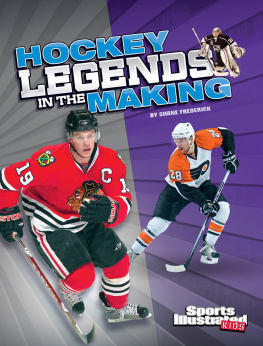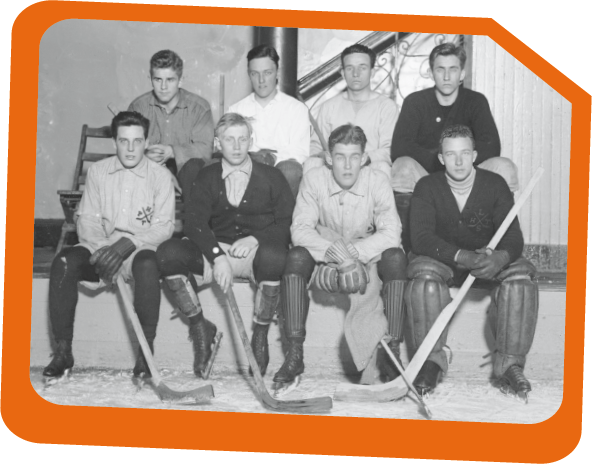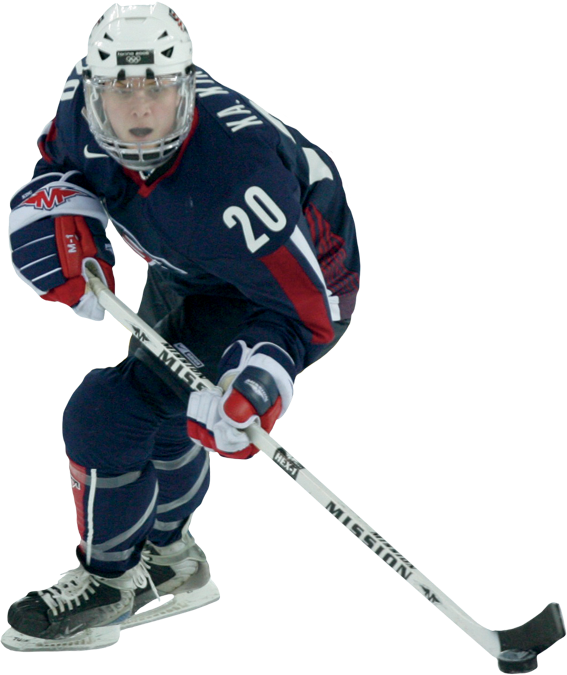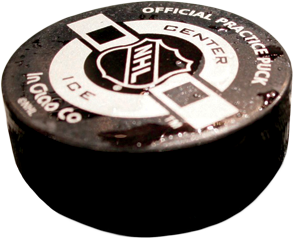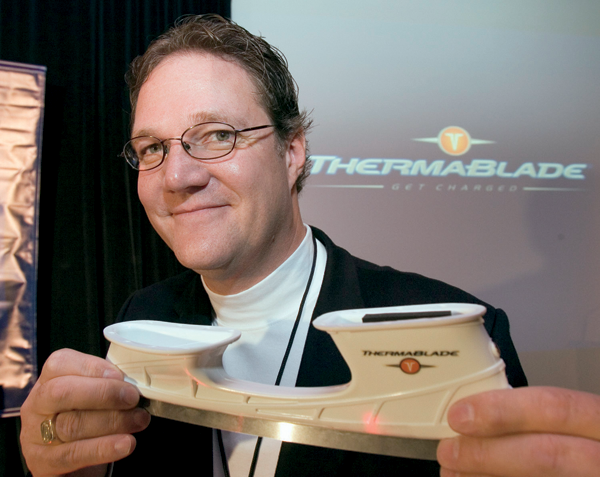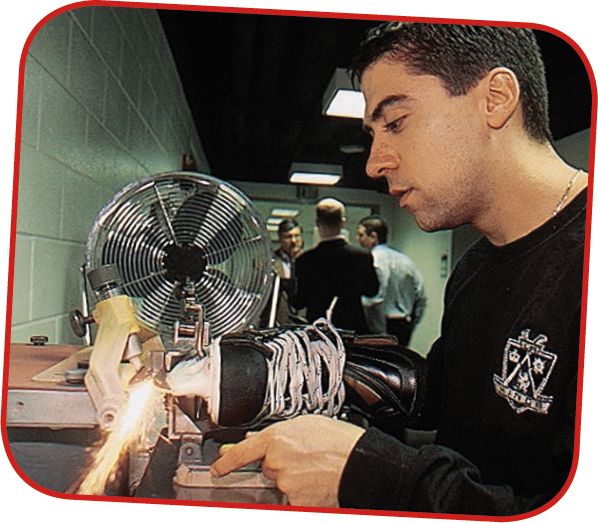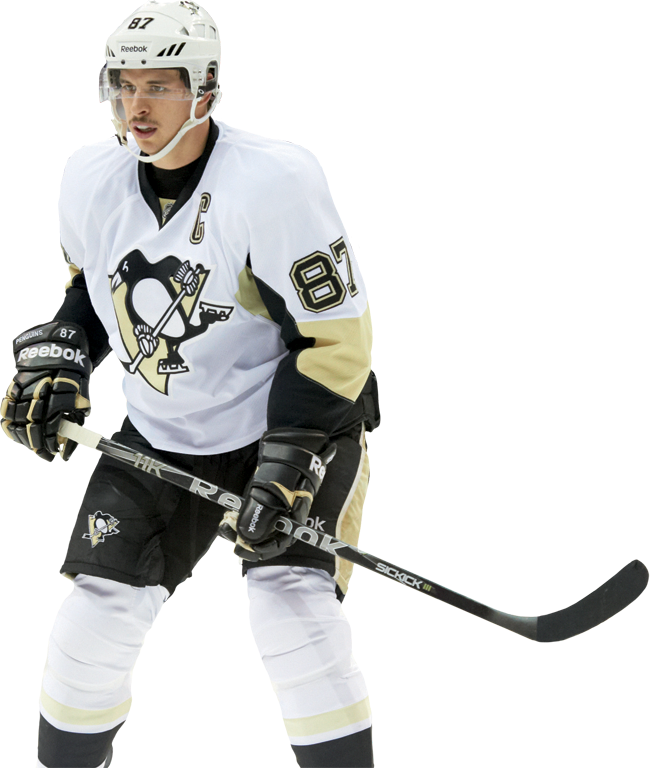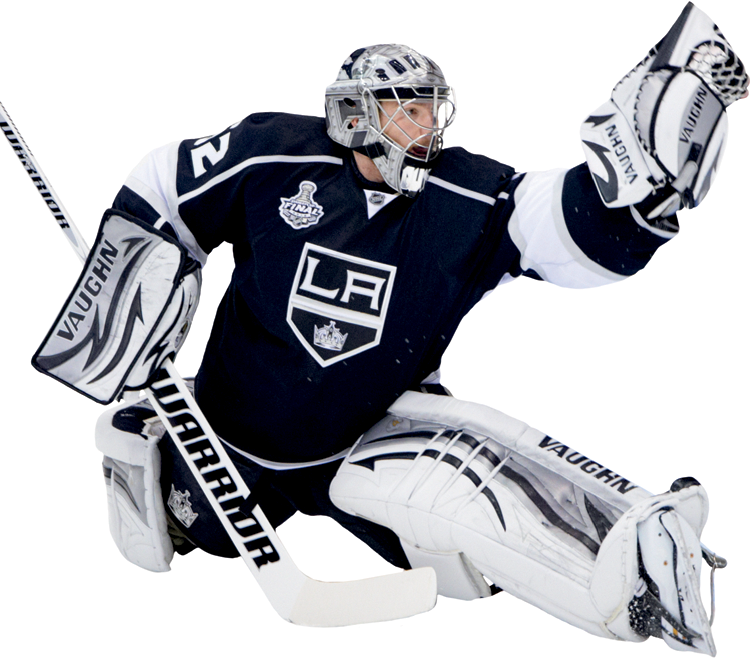CHAPTER 1
EQUIPMENT
EVOLUTION OF THE STICK
Whether youre playing ice hockey, field hockey, floor hockey, or roller hockey,onepieceof equipment is always in use: the stick. Over the history of the game,hockeystickshave changed a lot, thanks to technology.
Princeton hockey team from the early 1900s
In the early years, sticks were carved out of single pieces of wood, usually frommaple, willow, or ash trees. Over time players wanted to get more out of their sticks.They wanted them lighter, stronger, more flexible, and more accurate. Companies experimentedwith various materials, including laminated layers of wood in the 1940s and aluminumsticks in the 1980s.
Todays high-tech composite sticks are made of combinations of graphite, Kevlar ,fiberglass, and titanium . The strong, flexible shafts allow shooters to fire wickedwristers and rocket slap shots.
Companies use technology to test out their new designs and make sure their sticksare ready for anything. That technology includes puck-shooting robots and stick-breakingmachines.
Katie King of the U.S. Olympic team
TAKE OUT THE BOUNCE
NHL hockey pucks are made of vulcanized rubbera rubber mixedwith sulfur at high temperatures to make it stronger. Pucks are frozen before useto prevent them from bouncin too much on the ice
Kevlar a high-strength material
titanium a very strong and light metal
SKATES: GETTING AN EDGE
People have skated on ice for thousands of years. At first they used animal bonesas skate blades. Eventually wood and metal were used to glide across frozen lakesand rivers.
THE HEAT IS ON
Hockey players are always looking for a competitive advantage. One inventor thoughtthat a warm skate blade would help players skate faster. The ThermaBlade has a battery-poweredheater that warms the blade to 40 degrees Fahrenheit (4 degrees Celsius). Water freezesat 32 F (0 C), so the blade melts the ice into a thin layer of water, making theice slicker under the skate.
Hockey players today wear skates with steel blades. In order to skate effectively,players must have the blades sharpened with a grinding stone. Each blade has tworazor-sharp edges with a hollow carved-out section between them. Skaters use thoseedges to grip the ice to start, stop, and turn. A dull edge can slow a player downor even cause him or her to fall. NHL players have their skates sharpened every day.Some even have them sharpened between periods of a game.
A trainer for the LosAngeles Kings sharpensblades before a game
PROTECTING THE HEAD
The NHL began requiring players to wear helmets in 1979. But the league allowed playersalready in the league at that point to have the choice. Craig MacTavish chose toplay without a helmet. When he retired in 1997 with the St. Louis Blues, he was thelast player in the league to play without head protection.
Sidney Crosby
Even with helmets, head injuries remained a serious concern. In 1968 the MinnesotNorth Stars Bill Masterton was knocked down and hit his head on the ice. He diedtwo days later. Because of two concussions , Pittsburgh Penguins superstar SidneyCrosby missed 41 games in 201011 and only played 22 games in 201112.
concussion an injury to the brain caused by a hit to the head
Research is constantly being done to improve helmets in order to curb head injuries,especially concussions. Helmets now consist of a hard, lightweight plastic shellwith foam padding inside. While they cant completely prevent concussions, they canabsorb and transfer the energy from a hit into the boards or a fall to the ice.
A helmet cage protects Canadian Olympian Jennifer Botterills face.
Hall of Famer Mark Messier is involved in a project to make helmets even better.His helmets have shock-absorbing cylinders between the shell and the foam. The cylindersinstantly compress on impact to absorb the blow. They also bounce back just as quicklyso the helmetand the playerare ready for the next hit.
STOPPING THE PUCK
The bravest athletes in all of sports might be hockey goaltenders. The puck can hurtletoward the goaltender at more than 100 miles (161 km) per hour! Goalies use technologyto make their job easier and safer.
A goaltenders enormous leg pads were once made of leather. Today they are made ofstronger, lighter synthetic material. The new material doesnt get weighed down whenit absorbs water from the melting ice.
Jonathan Quick
synthetic not natural, made by combining different substances
Jacques Plante prepared to block a shot without wearing a mask.
Goaltenders didnt always wear masks. Montreal Canadiens great Jacques Plante becamethe first goalie to regularly wear one in 1959 after playing seven years withoutone. Todays goalie helmets may be painted with fancy designs that show off the playerspersonalities, but they are engineered for protection. Theyre made of a reinforcedplastic material that can be molded to fit the shape of players heads and faces.They also feature a steel cage in front of the goalies faces. Inside the helmet,padding helps absorb the impact of a shot.
CHAPTER 2
AT THE RINK
INSIDE ICE
If youve been to a hockey arena, you may have wondered how it could be warm at yourseatbutcold enough to keep the ice frozen inside the boards. Or maybe youve wonderedwhytheice doesnt melt in Los Angeles or Miami or during warm June nights whentheStanleyCup is being decided.

